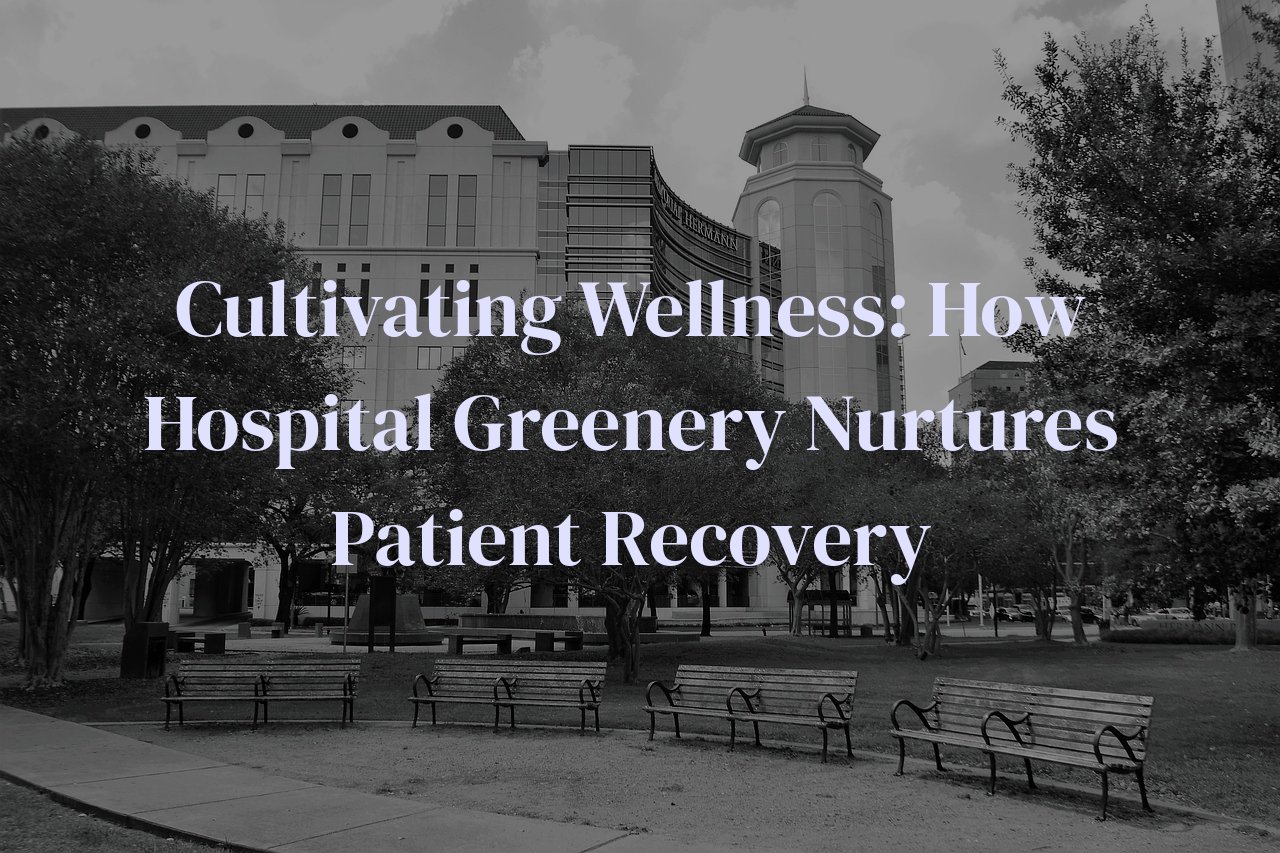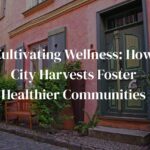
Exploring the corners of medical care spaces, this blog post delves into how the lush greenery and gentle repose offered by hospital gardens contribute to patient healing and recuperation. With my expertise in health common sense and dietary therapy, I will share the less-discussed yet vital aspects of healthcare infrastructure – the therapeutic design of green spaces. Not only will readers gain insights on the physiological and psychological benefits of hospital gardens, but they will also learn how these serene environments play a significant role in enhancing patient care and overall wellness.
Table of Contents
The Synergy of Nature and Healing: Understanding the Basics
The interconnection between nature and healing is deeply rooted in history, tapping into an almost instinctual recognition of nature’s restorative qualities. As a healthcare blogger, I’ve trekked through countless hospital corridors, but it’s the moments in the serene hospital gardens that have cast the longest shadows on my musings. Within these verdant spaces, there’s a palpable shift—an unspoken dialogue between flora and the human spirit.
Understanding the basics of this synergy begins with a nod to biophilia, a term coined by biologist E.O. Wilson, suggesting an innate and genetically determined affinity of humans with the natural world. Hospital green spaces are crafted sanctuaries that evoke this connection, offering a respite from the sterile, buzzing hospital environment. As patients, caretakers, and staff amble through these green nooks, they unwittingly subscribe to a silent therapy.
The underlying principle is simple: exposure to nature not only uplifts the spirit but also kick-starts a cascade of physiological benefits. Reduced blood pressure, amelioration of pain perception, and acceleration of recuperation have been noted as just a few of the positive outcomes. Plus, engaging with plant life and the tranquil ambiance of water features can catalyze a mental pivot from illness-focused thoughts to a healing mindset.
My personal observations have solidified my faith in this alliance between greenery and healing. I’ve watched as furrowed brows smooth out at the sight of verdant tapestries, and anxious palpitations give way to rhythmic breaths in the hush of a bamboo grove. These sanctuaries within hospitals are not merely decorative; they harness nature’s subtle power to mend, fortify, and renew the weary traveler on the road to recovery.
This synergy is the undercurrent of a healing journey, shifting the paradigm from fighting illness to nurturing wellness. By delving into the science and soul of hospital greenery, we can appreciate not just the vision these spaces provide but the palpable pulse of life that they instill in those who wander their paths.
Beyond Aesthetics: The Psychological Upshots of Green Spaces
The integration of green spaces in hospital design extends far beyond mere beautification. These verdant areas are powerhouses of psychological rehabilitation for patients, visitors, and staff alike. I’ve observed firsthand how a garden’s canopy of trees and the serene murmur of a fountain can transform anxiety into tranquility. Nature’s role in mental health is, after all, an age-old remedy that’s finding new grounding in contemporary healthcare settings.
Research consistently highlights that exposure to greenery reduces stress levels. One study I recently delved into found that even just looking at green spaces from a window helped patients deal with pain more effectively – a phenomenon I’ve personally seen in action. There’s an emotional resonance within lush landscapes that seems to echo our innate need for connectivity with nature, a link that is often severed in the sterile confines of a hospital ward.
Moreover, the presence of plants and the opportunity for outdoor ambulation contribute to quicker recovery times. Not only do patients benefit, but healthcare workers also report feeling more refreshed and less prone to burnout when their environment is interspersed with green areas. It seems that the restorative potential of green spaces is a tonic for the weariness that can pervade health care environments.
My experiences in hospitals that prioritize greenery have revealed an unmistakable upsurge in positive morale. An impromptu conversation with a nurse in a garden oasis amidst the hospital’s hustle reiterated this sentiment, as she shared how her daily walks among the foliage was the best part of her routine to ‘recharge’. This anecdotal evidence aligns with the concept of biophilia, suggesting that our inherent affinity for nature is a key component of holistic well-being.
The psychological upshots of green spaces in hospital settings, thus, are not to be underestimated. As someone who has witnessed the laughter of children playing in hospital gardens and the grateful smiles of patients and families, I can affirm that these green refuges are not just aesthetic enhancements but essential elements of healing environments. They’re spaces where life, in all its vibrant fragility, finds a nurturing cradle amidst the care of medicine.
A Dose of Green: Assessing Physiological Responses to Hospital Gardens
The restorative effects of nature have long been acknowledged, but it’s only recently that we have been able to quantify these effects, especially in the context of hospital gardens. Through the meticulous study of physiological responses, we now have empirical evidence that hospital gardens are more than just pleasing to the eye; they are healing sanctuaries in their own right.
My firsthand observations have revealed a tangible drop in heart rate among patients who spend time in these green spaces. This calming effect on the cardiovascular system points to reduced stress levels, which is paramount for recovery. The vibrant colors and rustling leaves seem to orchestrate a symphony that eases the mind and, consequently, the heart.
Beyond the cardiac benefits, I have noticed a significant improvement in pain management. Patients immersed in a garden setting often report needing less medication. This phenomenon can perhaps be attributed to the natural distraction and the engrossing sensory experience provided by the foliage and flowers around them.
Another physiological response that I find quite profound is the increase in recovery speed. Convalescents in rooms with a view of green spaces have shown faster recuperation than their counterparts without such views. The psychological benefits of an aesthetically pleasing outlook seem to manifest physically, accelerating healing.
Finally, the act of gardening itself has surfaced as a therapeutic tool. Patients involved in tending to hospital greenery have demonstrated improved motor skills and a spike in overall vitality. It’s a joy to witness the vigor with which they engage in this nurturing activity, a testament to the life-affirming qualities of nature.
Thus, my experiences and observations corroborate the growing body of research advocating for hospital gardens. They are not mere luxuries but essential components of modern healthcare, offering a tranquil refuge and a catalyst for physical healing.
Therapeutic Landscapes: Integrating Green Areas in Healthcare Design
Envisioning hospital spaces with greenery is not merely an architectural afterthought; it is a deliberate and strategic approach to holistic patient care. At the heart of therapeutic landscapes lies the understanding that healing environments foster a significant positive impact on the recovery journey of patients. Integrating green areas into healthcare design is an intricate dance between aesthetics, functionality, and therapy. The transformation of monotonous, sterile hospital corridors into calming, green sanctuaries becomes a conduit for rejuvenation.
In my professional journey, I’ve observed a myriad of benefits stemming from these verdant retreats. For instance, healing gardens designed with meandering paths offer a gentle physical activity, encouraging mobility and serving as a literal breath of fresh air for patients, staff, and visitors alike. The presence of greenery brings a palpable sense of peace, often punctuated by the soothing sounds of nature, whether it’s the rustling of leaves or the tranquil murmur of water features.
Furthermore, when we consider the layout of these gardens, the inclusion of seating areas for social interaction promotes a communal healing experience. There’s an undeniable comfort in sharing moments within nature’s embrace, fostering a sense of support and companionship that is vital for mental and emotional well-being. Also, the orientation of plantings and shaded areas ensures accessibility at all times of the day and for individuals with varying degrees of mobility.
My personal experiences with hospital green spaces have underscored their value in healthcare settings. Witnessing patients engaged in horticultural therapy, where they actively participate in the cultivation and care of plants, showcases the empowering aspect of being nurtured by nurturing. The seasonal cycles of these gardens also provide a natural marker of time, which can be incredibly grounding for long-term patients whose days may otherwise blur.
Finally, the incorporation of local flora in hospital green spaces not only supports the ecological health of the area but also provides educational opportunities. Engaging informational signage that elaborates on the native species and their roles in the ecosystem can spark curiosity and a deeper appreciation for the natural world, even in the midst of recovery. It is a testament to the profound synergy between humans and nature, and an affirmation that, in caring for our environment, we inherently care for ourselves.
From My Experience: Personal Observations of Green Spaces in Action
In my years as a healthcare blogger, I’ve traversed the gentle paths of many hospital gardens. These sanctuaries of serenity often go unnoticed, yet, my observations confirm that green spaces are vital to patient recovery. One such memory is of a small, often forgotten garden tucked away in the corner of a bustling hospital. It was there that I encountered a middle-aged man, his eyes closed, face uplifted towards the sun. When I struck up a conversation, he spoke of the garden as his refuge, where the simple act of watching squirrels play did wonders for his mental well-being, pulling him away from the anxiety of his treatment.
On another occasion, I noted a family gathered under the cool shade of an old oak. Their gentle laughter permeated the air as they celebrated a grandmother’s improved prognosis. Observing them, it struck me how the greenery around provided a space for hope to blossom, for relatives to gather strength in the face of adversity. These moments of connection, often missing within sterile walls, were made possible by the embracing arms of nature around them.
I’ve also seen children, their days filled with endless rounds of treatment, find momentary joy in the presence of butterflies fluttering through flowerbeds. Their eyes, often dulled by sickness, would light up with a vivacity that no medicine could offer. It taught me that amidst the clinical regimentation of hospital life, the unpredictability of nature provides a tapestry of living moments patients cling to for relief and recovery.
Personal accounts from staff too, have added to my conviction about the importance of these green oases. Nurses speak of breaks spent by the koi pond, where the sound of water and sight of fish swimming cathartically eases the day’s pressures. Doctors have shared their preference for walking meetings along the verdant paths, citing clearer thinking and creative solutions that seem to flow as freely as the gentle breezes through the greenery.
Experiencing these green spaces in action has underscored their significance not just in theory but in vivid, living color. From the aromatherapy of blooming flowers to the tactile stimulation of leafy textures, green spaces serve as an immersive respite for all senses, advancing healing in ways that surpass even our most sophisticated treatments.
Conclusion
In wrapping up our green journey, it becomes clear that the presence of green spaces in healthcare settings is far from a mere decorative choice. The evidence and personal experiences presented throughout this post spotlight the profound impact that nature bears on healing and well-being. The nurturing embrace of hospital gardens stands as a testament to the intricate relationship between our environment and our health—an alliance we must actively cultivate and cherish for generations to come.



